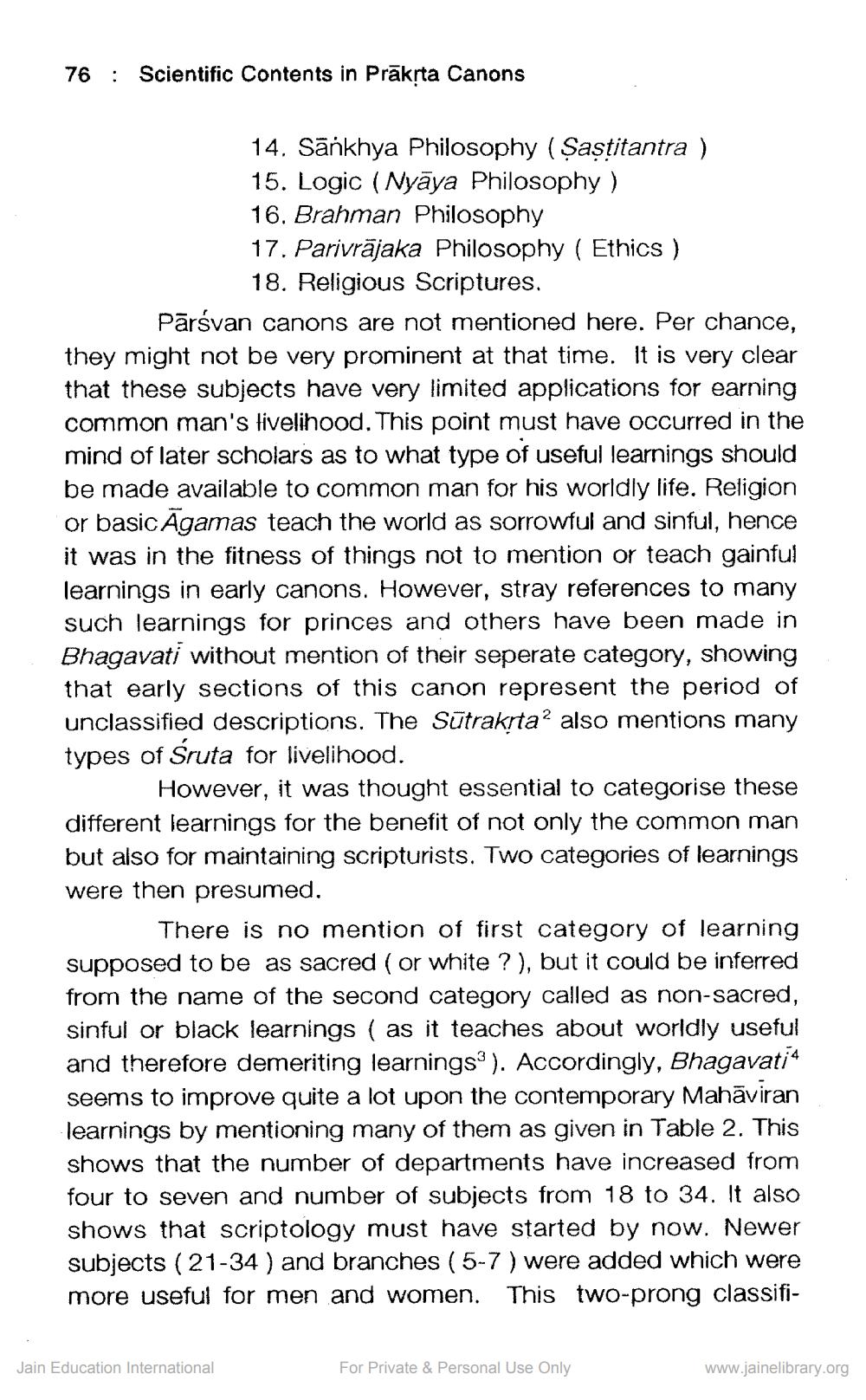________________
76 : Scientific Contents in Prākṣta Canons
14. Sāńkhya Philosophy (Şastitantra ) 15. Logic (Nyāya Philosophy ) 16. Brahman Philosophy 17. Parivrājaka Philosophy ( Ethics )
18. Religious Scriptures. Pārsvan canons are not mentioned here. Per chance, they might not be very prominent at that time. It is very clear that these subjects have very limited applications for earning common man's livelihood. This point must have occurred in the mind of later scholars as to what type of useful learnings should be made available to common man for his worldly life. Religion or basic Āgamas teach the world as sorrowful and sinful, hence it was in the fitness of things not to mention or teach gainful learnings in early canons. However, stray references to many such learnings for princes and others have been made in Bhagavati without mention of their seperate category, showing that early sections of this canon represent the period of unclassified descriptions. The Sūtrakrta? also mentions many types of Sruta for livelihood.
However, it was thought essential to categorise these different learnings for the benefit of not only the common man but also for maintaining scripturists. Two categories of learnings were then presumed.
There is no mention of first category of learning supposed to be as sacred (or white ?), but it could be inferred from the name of the second category called as non-sacred, sinful or black learnings ( as it teaches about worldly useful and therefore demeriting learnings”). Accordingly, Bhagavati" seems to improve quite a lot upon the contemporary Mahāviran learnings by mentioning many of them as given in Table 2. This shows that the number of departments have increased from four to seven and number of subjects from 18 to 34. It also shows that scriptology must have started by now. Newer subjects (21-34 ) and branches ( 5-7) were added which were more useful for men and women. This two-prong classifi
Jain Education International
For Private & Personal Use Only
www.jainelibrary.org




